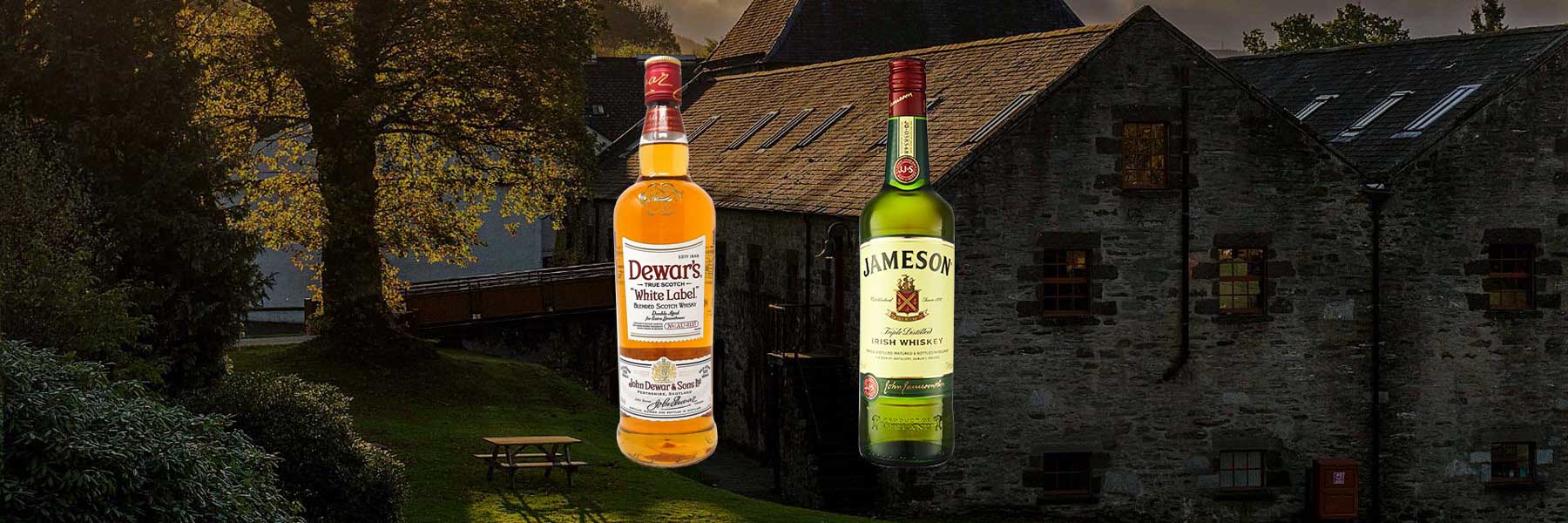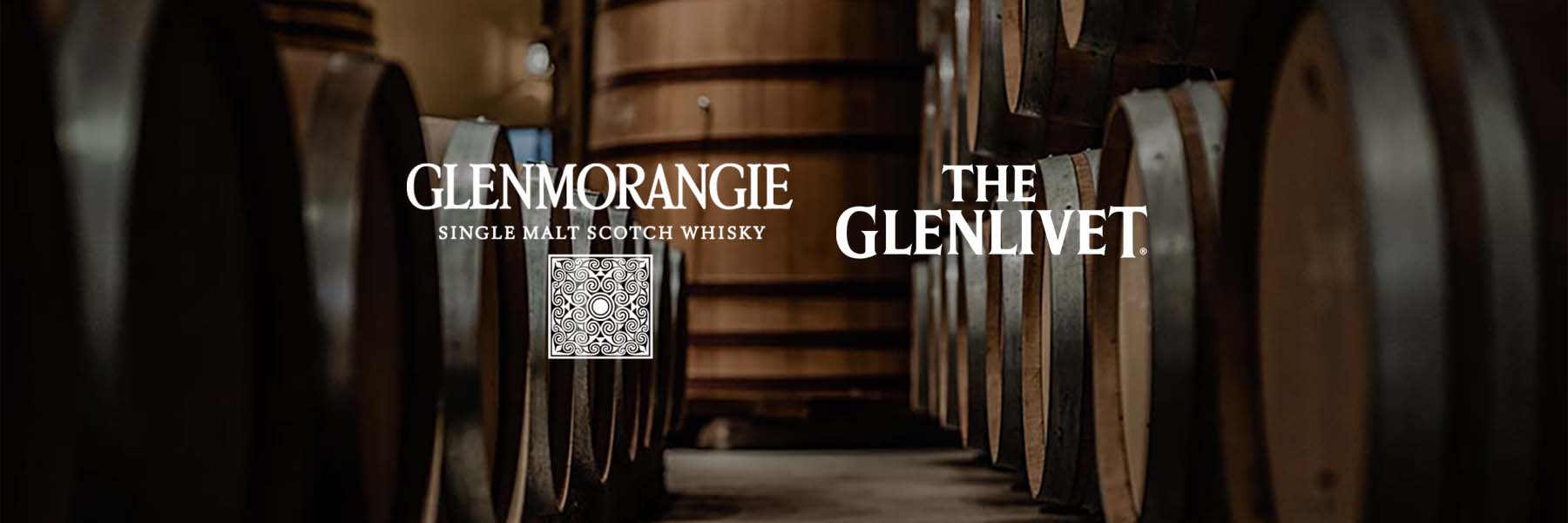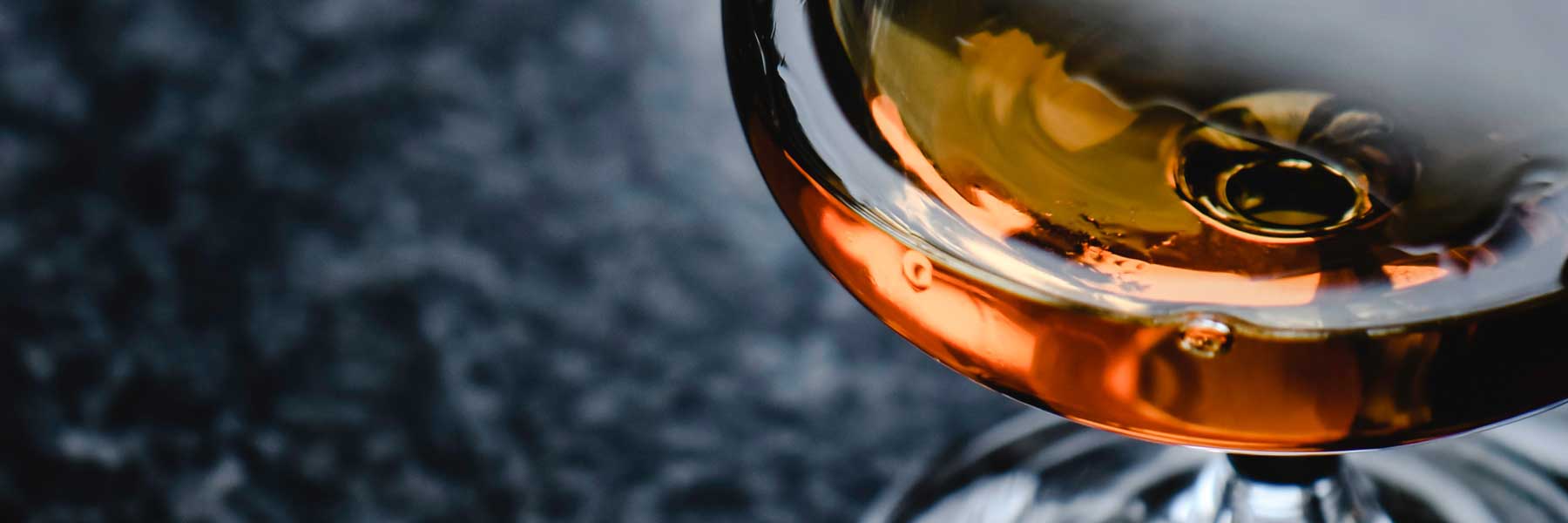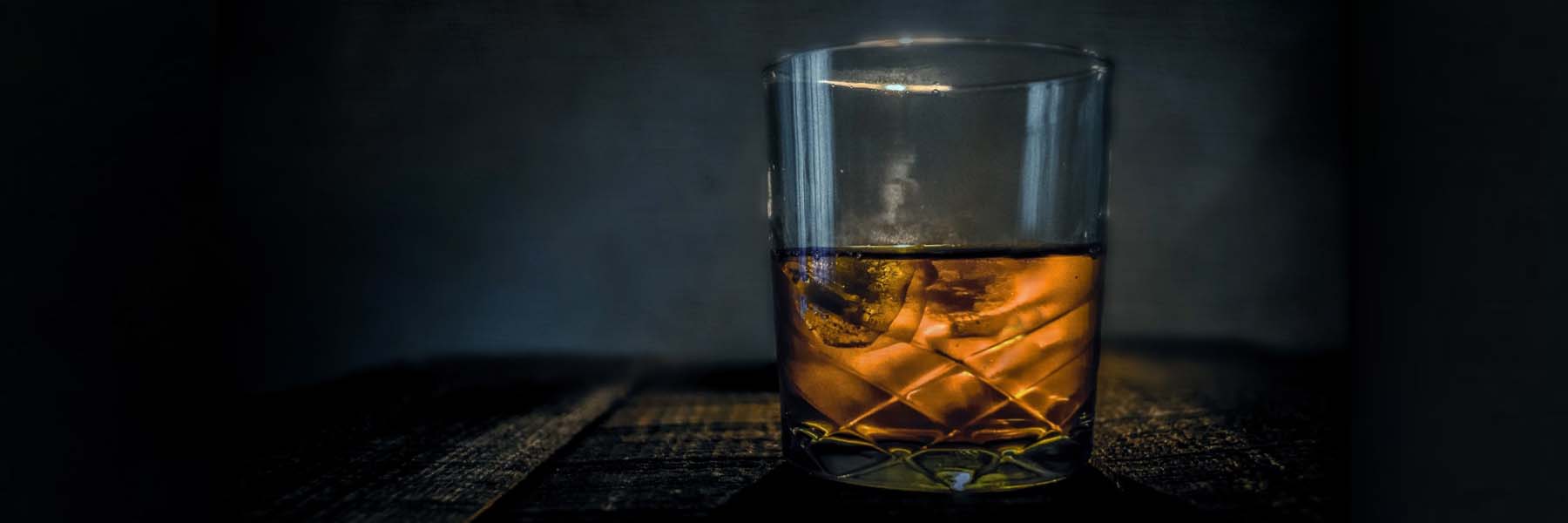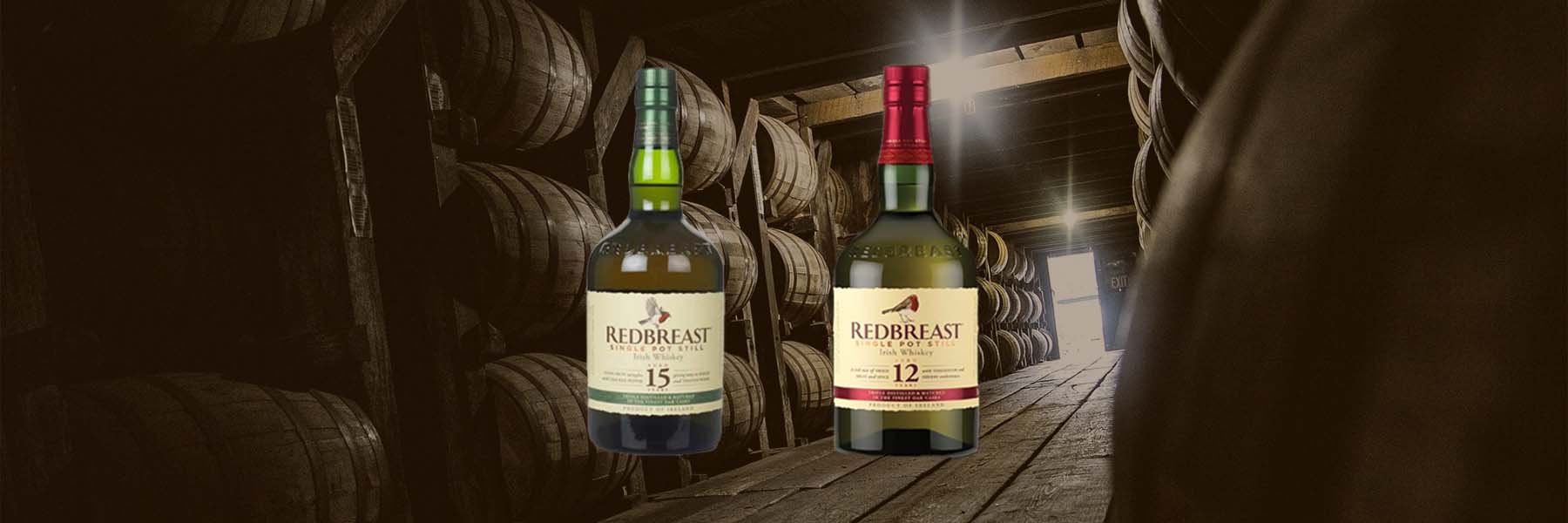Dewars vs Jameson | How do these signature bottles stack up?
When it comes to whisky, or indeed, whiskey, there’s two particular nations that go back the longest. The grandparents, the forebears, the elders… yes, it’s Scotland and Ireland. Both these mythical Celtic lands are home to some of the world’s most renowned and famous whiskies, be it single malt or blended varieties.
In today’s article, I’m comparing Dewars vs Jameson, taking a look at their signature bottles. I’ll look at key characteristics such as smell, taste and price value to help guide you towards which brand is the best choice for you.
Let’s dive in.
NB: Whisky is Scottish and whisk(e)y is Irish. I’ve endeavoured to use these spellings in relevance to the product being reviewed.
Quick brand overview
Dewar’s are owned by Bermuda spirits company, Bacardi limited and are a blended Scotch whisky brand. Their whiskies are centred around the single malt from the Aberfeldy distillery in Perth and Kinross, Scotland. Their White label blend is made from around 40 different whiskies, which comprises a variety of other single malts and grain spirits. Dewars have 6 bottles in their core range; starting with their signature White Label, and further 12, 15, 16, 18 and 25 year old expressions.
Jameson are currently owned by Pernod Ricard and are blended Irish whiskey brand. They were founded in 1780 by Scotsman John Jameson. Their large range of spirits are made in County Cork at the New Midleton Distillery using a triple distillation method of both malted and grain whiskeys. With over 8 million cases sold annually, Jameson are consistently the top selling Irish whiskey brand in the world.
Dewars vs Jameson
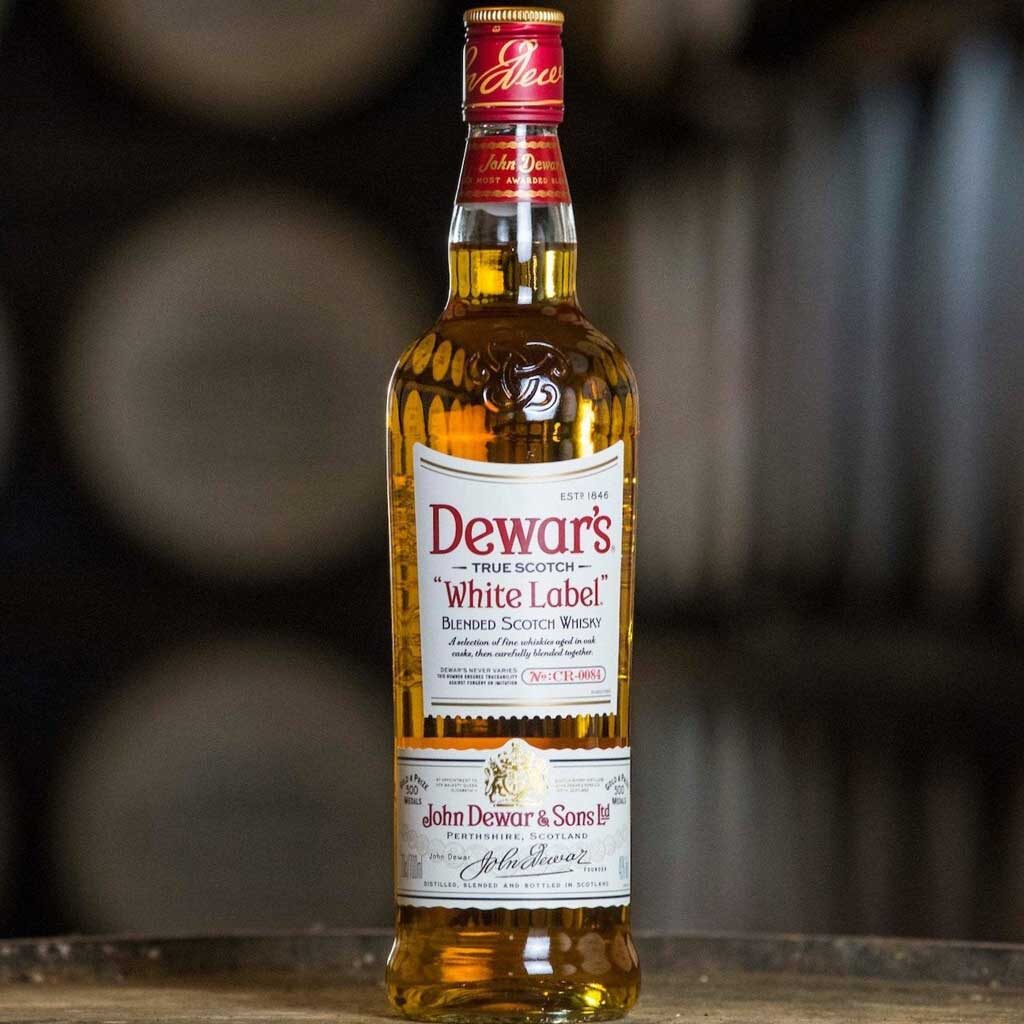
Dewar’s White Label
Nose: Honey, apple, peach & wood
Palate: Honey, fudge, toffee, oak & vanilla
Mouthfeel: Medium-bodied
Finish: Mid to long, herbal & sweet
Age: NAS (3 years, minimum)
Casks: Ex-bourbon & ex-sherry
Strength: 80 proof / 40% ABV
Classification: Blended Scotch
Price: £22 / $27
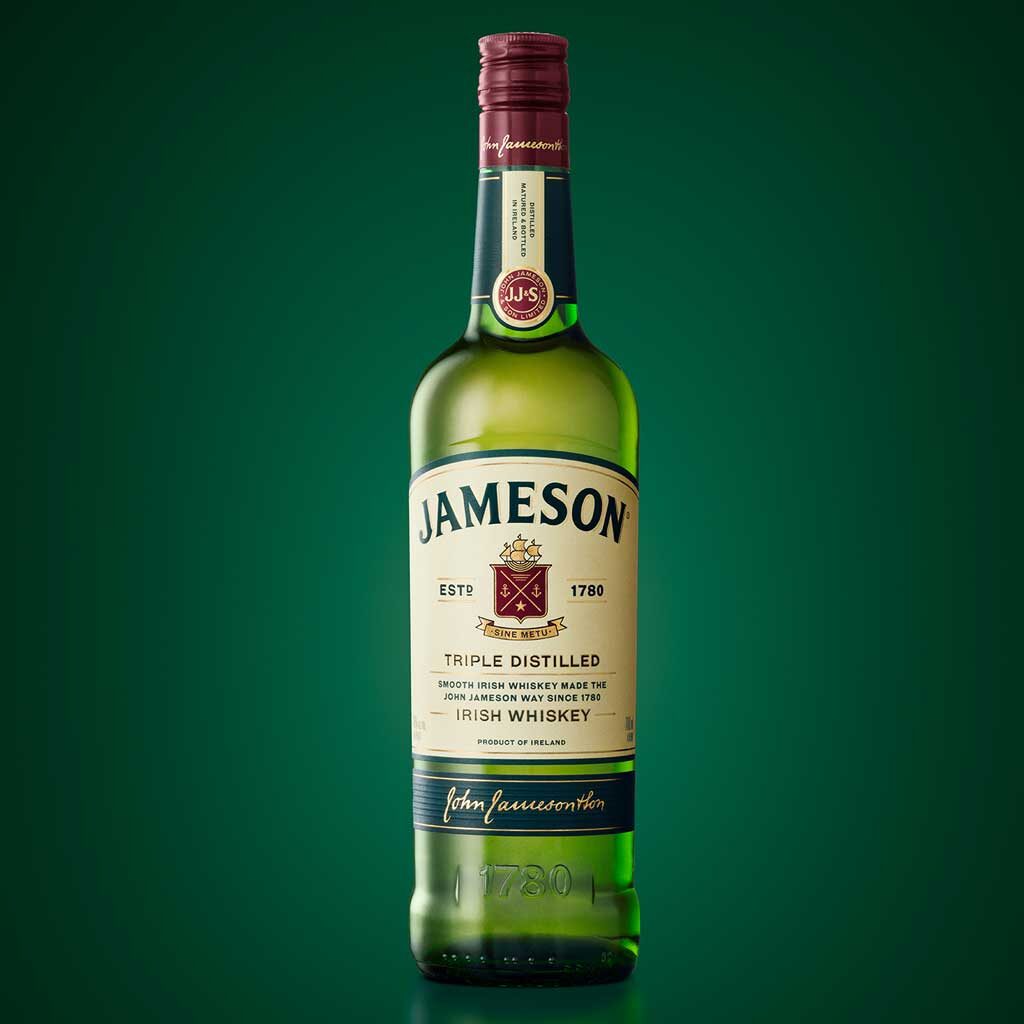
Jameson (Original)
Nose: Floral, sweet, fudge & grassy
Palate: Fruity, creamy, sweet & metallic
Mouthfeel: Thick & full bodied
Finish: Medium, sweet & spiced
Age: 4 years (minimum)
Casks: Ex-bourbon & sherry butts
Strength: 80 proof / 40% ABV
Classification: Irish blend
Price: £24 / $29
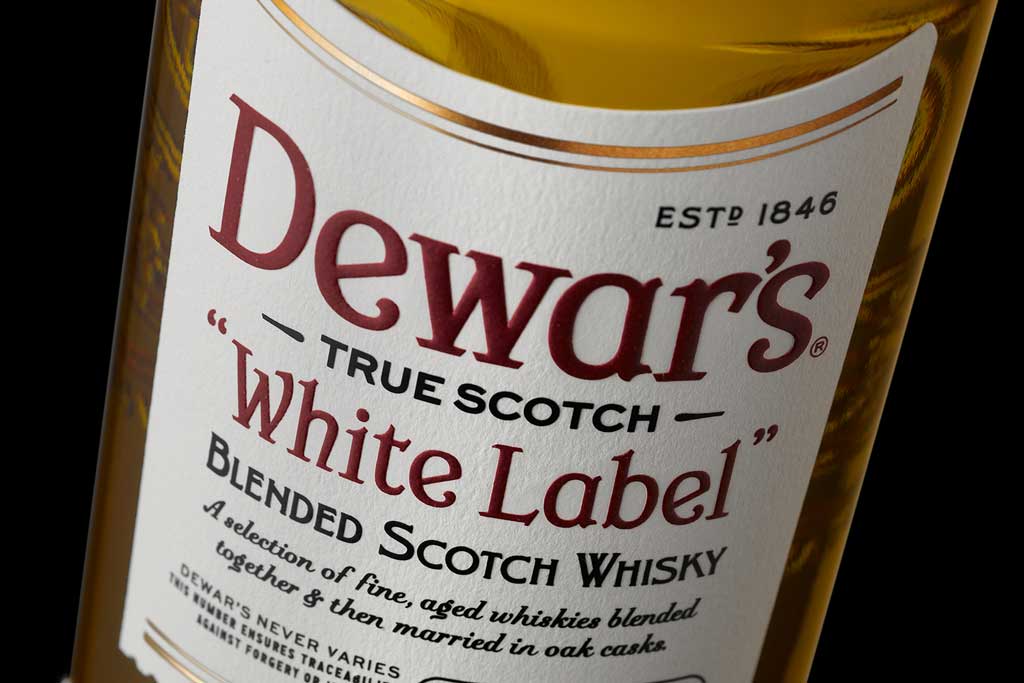
A closer look at Dewar’s White Label
Youngest in their core-range, Dewar’s White Label whisky is their signature blended Scotch. The backbone of this whisky is made from the Aberfeldy Highland single malt which is where the whisky is also blended and bottled. With it’s gently peated flavour, Aberfeldy brings a joyously creamy texture with notes of peach and vanilla.
In total, Dewar’s White Label is made with around 40 different whiskies which primarily come from the neighbouring Speyside region. These include single malts from Aultmore, Craigellachie, MacDuff and Royal Brackla distilleries – plus additional grain (wheat) whiskies from undiscolsed sources. Broadley speaking, these Speyside spirits are known for their light and fruity notes, which lend a vibrant and delicate character to the Dewar’s blend.
As an entry-level bottle, I’m interested to see how this stacks up against the widely known Jameson Irish Whiskey.
Nose: Opening the White Label, it greets you with the obligatory metal screw cap which seems to plague low level blends. (Compared to cork toppers, I think they’re super flimsy.) Poured into my glass, this whisky has an immediately sweet aroma of honey, mixed with apples and fresh peaches. I also get a woody sort of smell that reminds me of antique furniture.
Swirling the whisky, I get subtle wisps of cut hay. It’s a pleasant scent, adding an earthy undertone to the fruity orchard sweetness. There’s also a faint smell of citrus. I hope these smells indicate what’s to come in the tasting, becuase on the nose, it’s a really lovely smell.
Palate: The first sip is intriguing. At first, I taste the sweet honey promised from the nose along with vanilla, fudge and a slight smokiness. Further in however, there’s a stronger toffee like taste with toasted oak tannins. These flavours build in waves, initially starting sweet before becoming more herbal and citrussy.
There’s an interesting tension in this dram, offering a surprising complexity I didn’t anticipate from such a youthful blend. It dances between sweet and floral with a pleasing flavour of vanilla. Not harsh at all, it’s really quite easy to drink too.
Mouthfeel: For me, White Label has a medium body with a light pleasant texture that envelopes the palate. It’s neither too thin, nor overly sweet – despite the overall honeyed flavour. Toasted oak gives just enough warmth and dryness without being interfering or harsh. In terms of texture, the Dewar’s has a creamy and very slightly oily mouthfeel that lightly coats the mouth. At 40% ABV, it’s perfect for sipping without any water. I’m quite happy drinking this blend neat.
Finish: The finish is reasonably long. For me, the honey sweetness is the most predominant flavour in the aftertaste which lingers on the tongue with floral hints of heather. At the very very end, there’s more of those fresh herbs and a mild peat smoke. Subtle, but a nice contrast to the overarching sweetness of this dram. Smooth, light and pleasant.
Price: Overall, I’m surprised with the smoothness of the White Label. For a younger blend, I’m impressed with it’s relative complexity, balancing sweet and herbal notes. As an NAS entry-level bottle, this whisky really delivers for its price category. Personally, I think you get what you pay for… and then some more. If you’re looking for an easy-drinking, affordable Scotch blend, this bottle is good value for the money. At just US $27 / UK £22 it’s definitely worth trying.
Considering this is their entry level bottle, the White Label from Dewar’s is a pleasant surprise. It’s stands on it’s own as a sipping whisky without much harshness or youthful heat. I personally enjoyed this whisky without water or ice, but a few drops might open up the lighter herbal notes nicely.
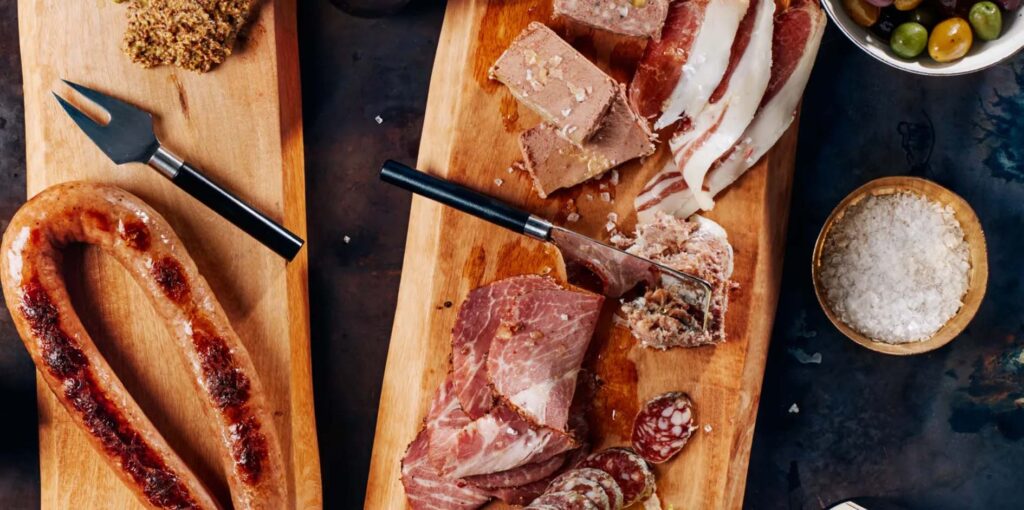
Dewar’s White Label food pairings
For starters, Dewar’s White Label whisky pairs nicely with a platter of charcuterie meats, aged cheeses, and fruits. The salty and savoury flavours of the meats will be nicely contrasted by the subtle sweetness of the whisky. Also, the grassy notes in the whisky can be enhanced by pairing it with almonds or other sweet nuts like pecans. As it’s early-on in your meal, consider mixing the Dewar’s with soda to keep things light.
For mains, this whisky pairs perfectly with hearty dishes such as steak or lamb chops. The smokiness and sweetness of White Label adds complexity to the rich meatiness of these dishes. Additionally, White Label would also be fantastic with smoked salmon. The combination of the whisky’s smokiness and sweetness will compliment the brininess of the fish nicely.
Finally, for dessert this whisky is great when paired with dark chocolate desserts like brownies or truffles. The smoky and sweet notes of the Dewar’s will provide a sweet and fruity complexity that compliments most chocolate based recipes without overpowering them. For added depth and flavour intensity, chocolate desserts with citrus fruits are known to enhance these particular flavours in whisky. A Terry’s chocolate orange would be an easy win here!
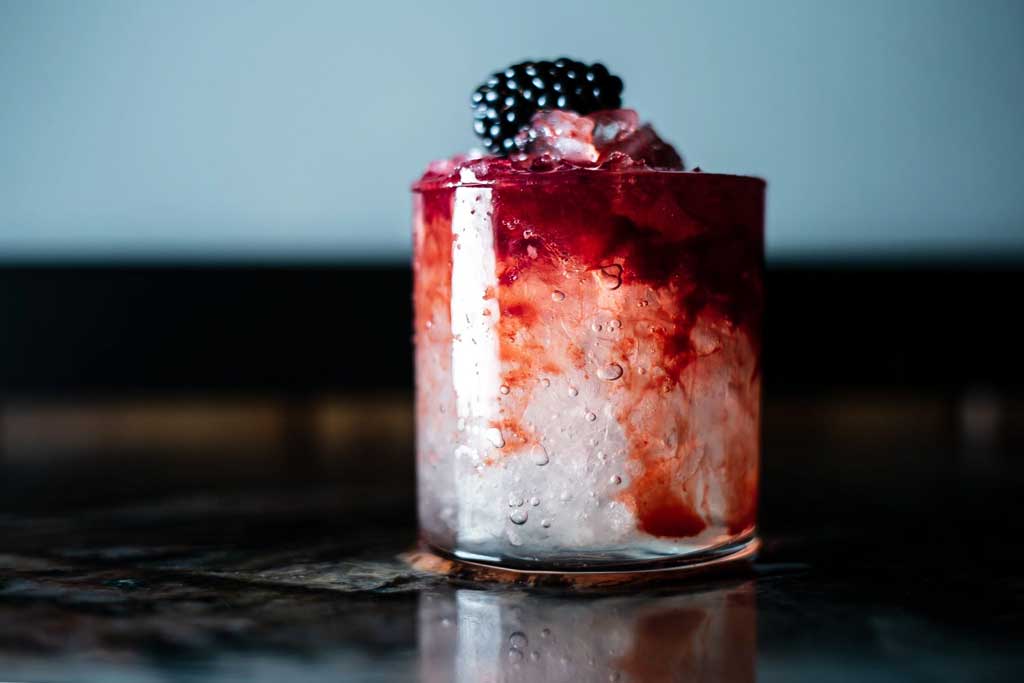
Dewar’s cocktail suggestion
With such an excellent pun, try making this lovely Dramble cocktail with Dewar’s White Label Scotch. For something a little more fruity and adventurous than the usual Old Fashioned or highball, this charming little drink balances sweet and sour in perfect measure.
- 60ml Dewar’s 12 year old
- 30ml Lemon juice
- 15ml Sugar syrup
- 10ml Blackberry liqueur
Method
Exuding the blackberry liqueur, add all your ingredients to an ice-filled rocks glass. Using a long bar spoon, stir until fully combined. Top with more ice until the glass is full packed and ice cold. For a fruity sweet finish and lovely bramble colour, gently drizzle the liqueur on top so it taints the upper half of the drink. Serve.
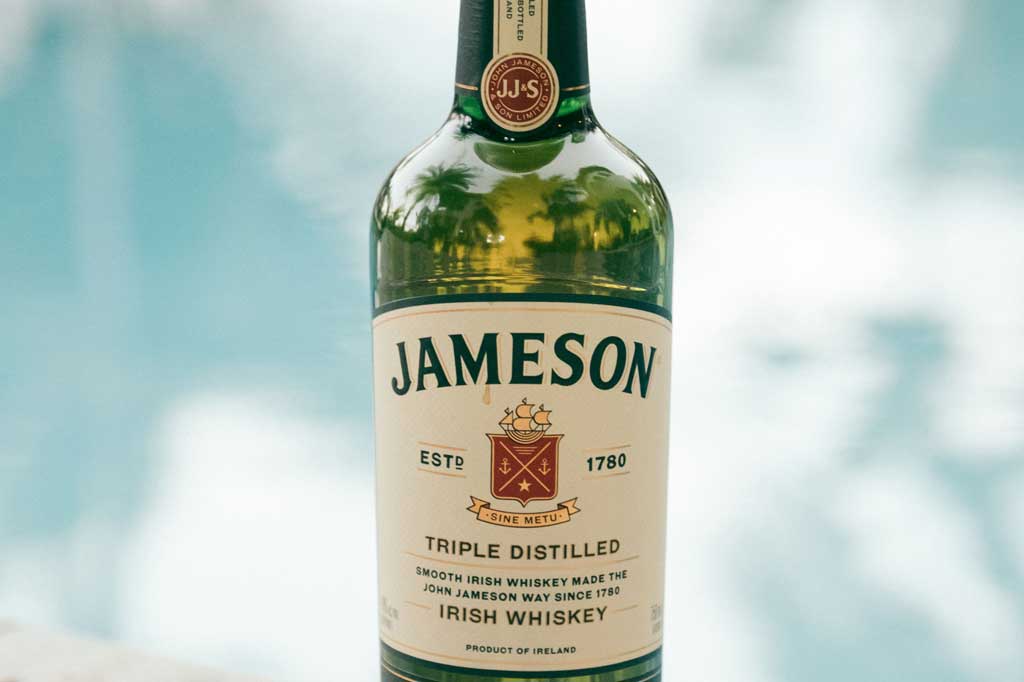
A closer look at Jameson whiskey
Jameson is a blended Irish whiskey made at the new Midleton distillery in County Cork. Situated beside the original 17th century distillery, this ultra-modern site is one of the most technologically advanced in the world. Home to three of the largest operational pot stills in the world (75,000 litres each) the distillery makes a variety of other whiskey brands alongside the Jameson production lines.
For this review, I’m inspecting their most famous flagship bottle, often known as Jameson ‘Original’ or Jameson Irish Whiskey. This quintessential Irish blend is made from a mixture of malted and un-malted barley, as well as column distilled grain (corn) whiskey.
Unlike Scottish whiskies which are (almost always) double distilled, Irish whiskeys are usually triple distilled. This ultra-purification makes spirits such as Jameson incredibly smooth, with a resultantly high proof/ABV% prior to blending and dilution. In your glass, there’s noticeably very little burn which is why Jameson has a reputation for being a very smooth whiskey to drink.
Nose: Like the Dewar’s bottle, Jameson also uses a metal screw cap. (No extra points on the opening experience!) With a little swirl and a chance to breathe I notice a distant floral aroma, followed by a tangy marmalade sort of scent. There’s also a sweet-ish fudge smell in there too.
So far, I’m struggling with this nose. Searching my glass, there’s no immediate bouquet or dominant aroma and it feels a little weak. Occasionally, I get wafts of dry Madeira and a lightly organic, grassy scent. Overall, the nose is mild at best. Not bad or off-putting, just difficult to detect. Compared to the White Label, it’s not as good.
Palate: Now, I’m aware the Jameson has been triple distilled, so I’m expecting a fairly smooth entry to this whiskey. On my first sip, there’s more abundant flavour than what was indicated from the nose. There’s a defined fruity sweetness which tastes like apples, grapes and pears which gives a slight tang in my mouth. This is balanced by a honey sweetness which round things out.
As predicted, this whiskey lives up to the triple distillation. Texturally, its creamy like custard and velvety on the palate. I’d go as far to say this is just as smooth, if not smoother than the Dewar’s.
Further into my glass, subtler notes emerge of caramel and vanilla. There’s also a mild degree of spice, but it’s by no means hot or fiery in any way. Not much depth going on, but a pleasant balance to the initially fruity flavours. Oddly, there’s this annoying metallic flavour that starts to creep-in. It’s hard to describe, but it disrupts the overall taste and manages to barge in on the sweetness. It’s a shame as I feel this whiskey is otherwise quite delicate.
Mouthfeel: Boasting an incredibly creamy and velvety texture that moseys over the tongue, this dram is certainly worth its price. Its medium-bodied mouthfeel offers notes of honey, caramel and apple sweetness as you sip on it.
Finish: The Jameson’s finish is medium length, balanced between sweet and spicy. Honey notes coat your palate and linger in an exquisite way after each sip. Adding further complexity, there’s also a delicate spice profile which tantalizingly tickles the back of your tongue for several seconds afterward.
Price: At just $30 a bottle, Jameson offers good value for money. It’s a quintessentially smooth Irish whiskey with a relatively simple but pleasing balance of sweetness, fruit and mild spice. There isn’t much depth going on, but it’s incredibly easy to drink with very little harshness.
As Irish whiskeys go, there are certainly better options available, however Jameson is incredibly affordable and can be found just about anywhere online. As an introduction to the category, it’s an acceptable entry-level whiskey you can rely on that wont break the bank.
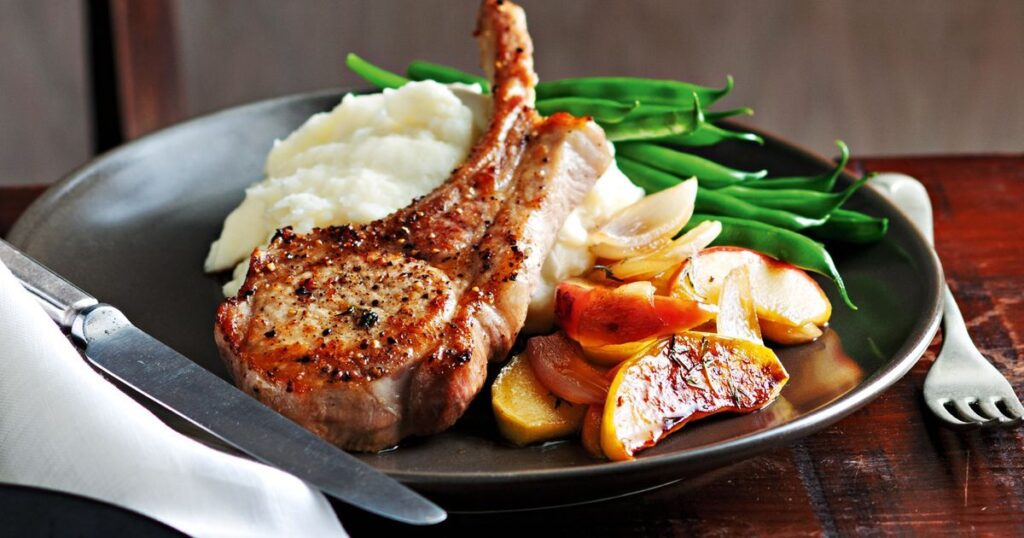
Jameson food pairings
For starters, Jameson pairs beautifully with delicate appetisers such smoked salmon tartare. The sweet fruity notes of the whiskey compliment the delicate flavours of the fish without completely overpowering it. If raw fish isn’t your thing (totally understandable) then a mixed charcuterie board with cheese is another great option. A Jameson with soda is the perfect match for salty meats, mature cheeses and olives.
For mains, consider dishes like oven-roasted chicken served alongside mashed potatoes. The lightly sweet taste of Jameson brings out the flavours of the herbs and spices used in the marinade or gravy, while also providing an added depth to the dish. Another great option is grilled pork chops glazed with Jameson honey garlic sauce – this will give you a sweet, savoury flavour with some additional ‘oomph’ from the whiskey.
For dessert pairings, consider something like French toast topped with fresh fruits and a drizzle of Jameson glaze. Simply boil the whiskey in a small pot and reduce it down with honey, sugar or maple syrup to create a sweet glaze. Another use for this boozy syrup is is apple crumble, served warm and topped with a scoop of ice cream These indulgent sweets will be taken to another level thanks to the smooth taste and fruity complexity of the Jameson.
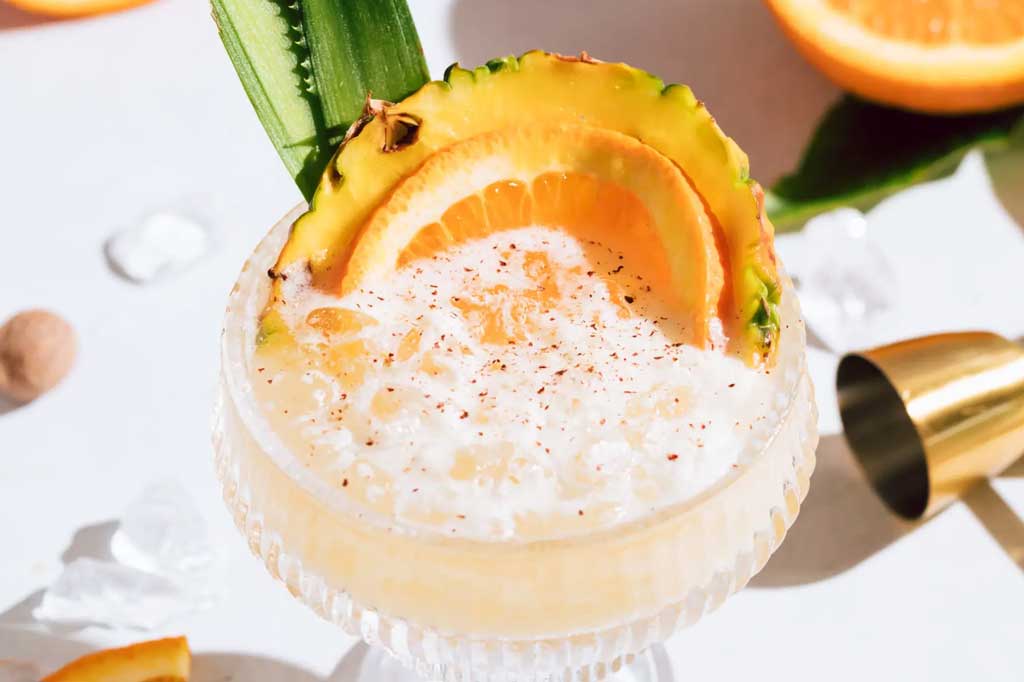
Jameson cocktail suggestion
As a leftfield suggestion for this Irish whiskey, why not try this exotic Tikki inspired cocktail? If you’re a fan of tropical flavours, grab yourself a metal shaker and a can of pale ale beer. Trust me on this one, it’s a cracking little concoction that you’ll want to make again and again.
- 30 ml Jameson original
- 60 ml pale ale
- 30 ml coconut water
- 30 ml pineapple
- 20 ml lime juice
- 15 ml simple syrup
- Pineapple leave
Method
In an ice-filled cocktail shaker, add all your liquids but definitely not the beer. Give it a good shake for 15 seconds and strain into an ice-filled highball glass. Gently top with the pale ale beer and garnish with the pineapple leaves for some colour. Serve.
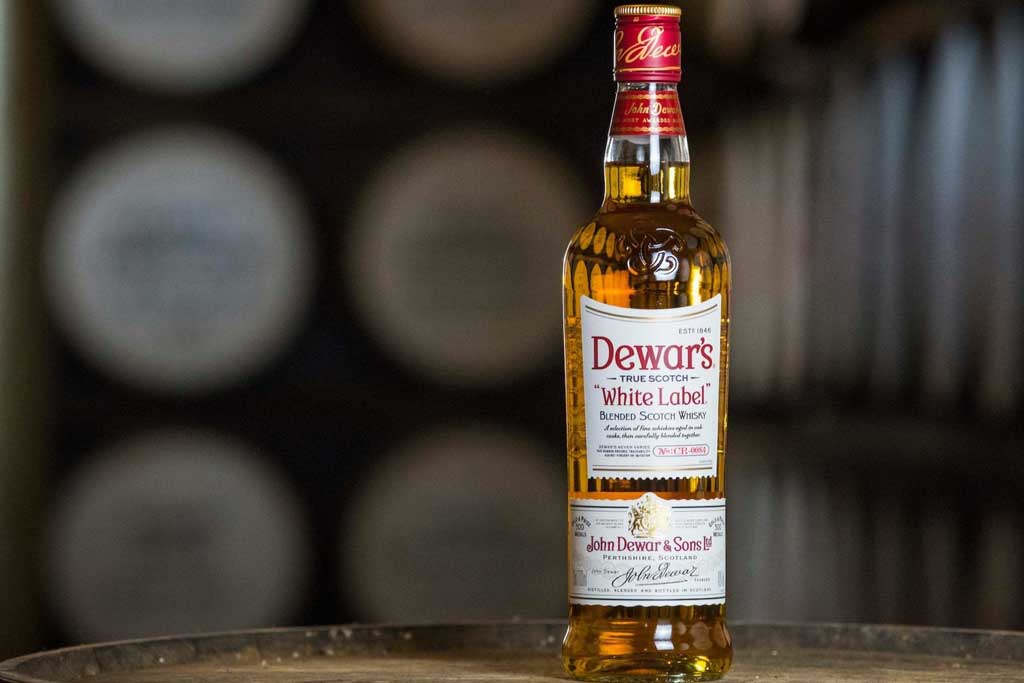
Final thoughts
Keeping my expectations in check, these entry level bottles were both reasonable drams. The Dewar’s White Label was a lovely mixture of sweet fruit and spice which had unexpected depth. Honestly, I was prepared for something much simpler, but this blend held my attention with it’s secondary herbal layers, spiced oak and vanilla qualities. For it’s price point, I’m quite impressed.
As for the Jameson, the lacklustre nose was compensated with reasonable flavour. It was slightly sweeter than the White Label with an overall simpler profile of honey, apples and pears. It was also silky smooth which I think would be it’s greatest attribute. I just wish the metallic twang wasn’t there which sort of spoiled the overall drinking experience.
Author’s recommendation
Between these two signature bottles, I’d recommend the Dewar’s White Label over the Jameson. For me, it had better depth and variation of flavour. The nose was more defined and the palate developed as your drank it, transitioning between sweetness and fruit, woven with herbs and vanilla. I think this bottle delivers above it’s paygrade, which left a good taste in my mouth; literally and figuratively. Not bad at all.


